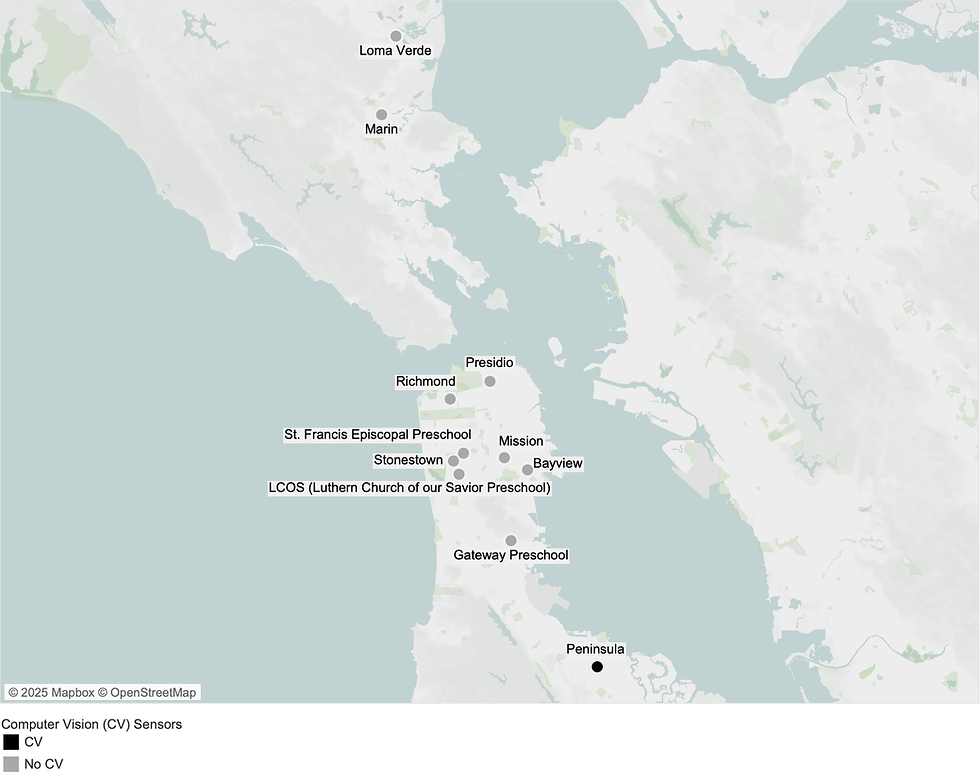Why Time Matters: The Compounding Effect of Schedule Optimization
- Nate Goore

- Sep 30, 2022
- 3 min read
Updated: Nov 20, 2023
The spaces we occupy have become more specialized over time. Advances in design and technology have led to sophisticated environments that excel at producing very specific outcomes. This, however, has come at a significant cost – as our spaces become more specialized, the amount of time they are in use tends to decrease. We have accepted a linear relationship between quantity of space and output, and if we want to do more of something, we need to build more. What has largely been ignored is the time dimension. How often are our spaces actually in use? As the cost to build new space escalates, a more effective way to produce more is to increase the amount of time our spaces are in use. Integrated design of spaces and schedules to optimize utilization is critical to long-term value and resiliency.
Space specialization happens at all scales and across all typologies. New homes have rooms specialized around particular uses: living rooms, family rooms, media rooms, game rooms, bedrooms, guest rooms, and personal bathrooms. Stadiums are now single-sport venues, and we have dedicated performing arts venues for symphony, ballet, and opera. High schools, colleges, and universities dedicate classrooms to individual fields of study (think of the chemistry lecture hall), specialized lab environments, student activity spaces, and administrative functions.
This has led to a proliferation of space-creation through building without recognizing the cost of the unused space-time. What could 300 acres of parking at a stadium unused for 300 days per year produce if it is put in service for an extra 100 days per year?
We have and will continue to have, specialized environments for many valid reasons, but it raises the question of how we can increase the use of these spaces to improve their overall utility. Take, for example, college classrooms. A higher ed client of ours has a classroom inventory of 318 classrooms. These rooms are scheduled on average 19 hours per week. Increasing the weekly use of these rooms to 25 hours per day (only 5 hours per day, Monday through Friday) provides the same increase in classroom capacity as building 100 new classrooms at a projected cost of $120MM. Notably, classes tend to be scheduled primarily in the late morning and early afternoon. Extending the hours of course scheduling into the late afternoon and evening increases the university enrollment capacity while also offering learning opportunities for students who may not be able to attend class during the middle of the day, all without building more space.


Space utilization is increased by also opening spaces to different user groups. The Emeryville Center of Community Life, planned and designed by MKThink in 2009-2012, integrated school and community spaces, increasing the average weekday use of learning and recreation spaces by three hours per day. Space sharing can be complicated, and the logistics of managing shared use of space is often cited as a reason for not implementing space-sharing programs. Technology, however, has made this easier to do. Airbnb has built a $66 billion business based on monetizing the value of underutilized residential space.

Space use is also increased by designing flexibility into our spaces. Remember the elementary school multi-purpose room? A cafeteria, a theater, and a gym are all in one space. The movable furniture and careful schedule management kept up with the changing functions of the space over the day. The multifunction room was in use all day; compare that to three dedicated spaces, each getting several hours of use and remaining vacant for the rest of the day (and evening). More recently, STEAM programs have introduced spaces that serve a range of science, engineering, and art programs. Public and university libraries have transformed dedicated book storage space into flexible study, exhibit, and event space, increasing the use time and breadth for users.
Demand for space has always gone hand in hand with the ideas of growth, progress, and advancement. As the economic cost of building continues to rise, and as we become more aware of the long-term environmental consequences of the resource acquisition associated with construction, we can reevaluate how we utilize existing and new space. Extending use schedules, sharing space across multiple user groups, and creating flexible spaces that serve more than one purpose are all viable methods to build less and solve more. A focus on increasing the time that space is used can create new space while reducing the amount of building needed to meet our goals.




Comments